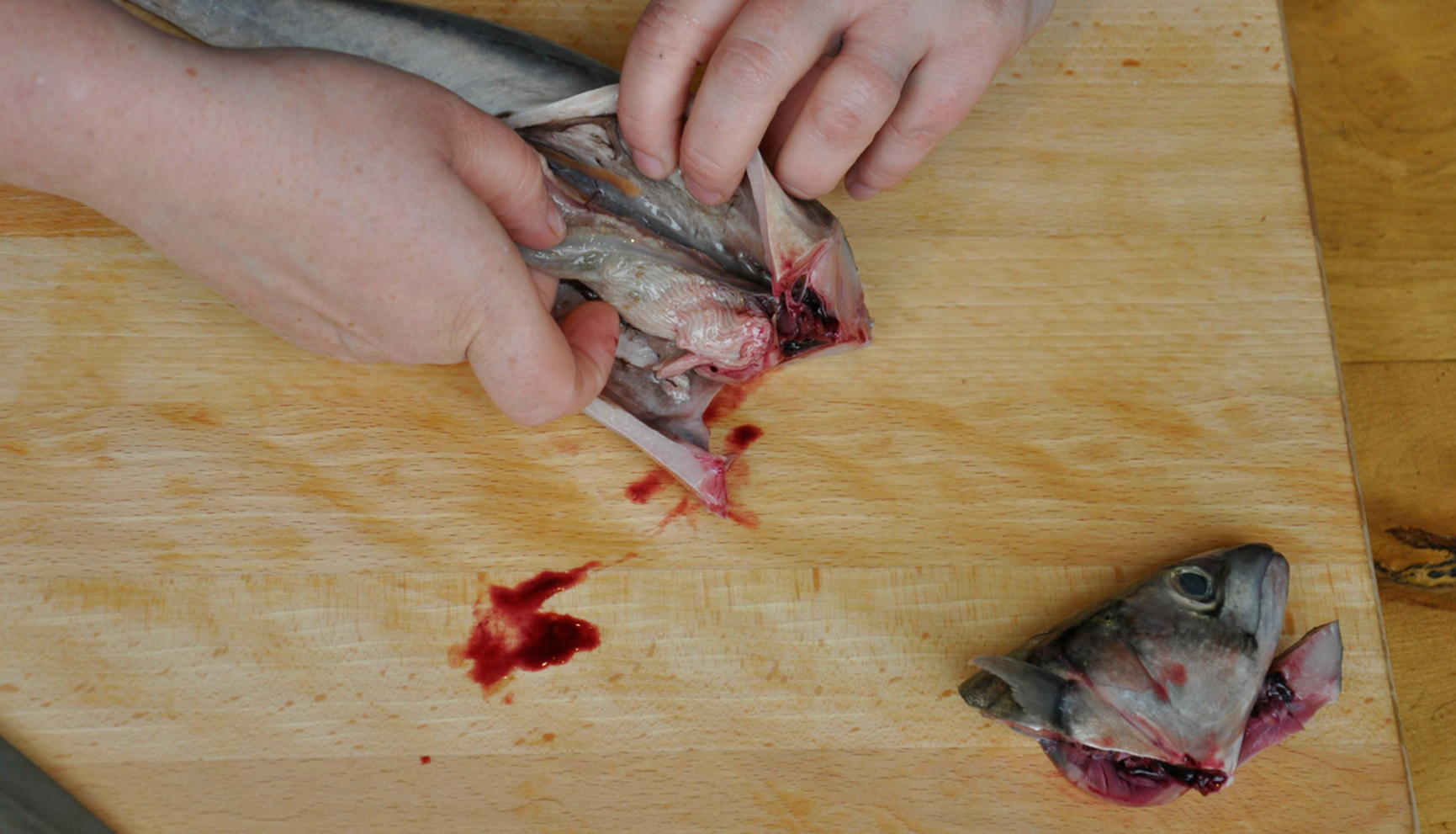Curing Mackerel
Mackerel is one of my favourite fish to teach as most students get surprised how delicate this fish is cured and in my view it is the perfect alternative to tuna being imported from far afield. A slim line torpedo shaped fish it is in the same family as oily fish sardines, herring, bonito and tuna. It is pelagic fish swimming in great shoals near the surface of the sea designed for fast swimming and perfectly camouflaged with a black-blue back seen from above against the dark glistering sea or from below with its silvery shiny underside against the light coloured sky.
Mackerel currently do not have a MSC certification, but is generally perceived as being sustainable when caught either by mid-trawl nets or line caught. The latter is preferred for Japanese cuisine as the fish is being eaten semi-raw, I recommend mackerel form day boats as these are the freshest fish and handled with great care. Buy fresh line caught mackerel from a well reputed fishmonger or pop to Billingsgate Fish Market on a weekday on the dot of 5am and you will find good quality mackerel from merchants with a broad repertoire of UK sourced fish. Good quality whole mackerel will cost £3.75 - £6.00 depending of the time of year and demand.
We have fantastic quality mackerel from both Cornwall and Scotland and this is in season from late April to January. It is not recommended to eat mackerel in February and March, this is their spawning season and they should be left in the sea to multiply. I personally prefer mackerel in October, this is the period it is fattening up for the winter, dense, buttery and bursting with essential omega3 fish oils. Mackerel also contains selenium, vitamin B12 and niacin and is low in sodium, this is in no doubt a truly superfood.
Prepare the mackerel the day they are bought, ensuring that the eyes are clear and protruding from their sockets, the gills are red, spongy and smelling of the sea. If in doubt insist that you smell the fish before buying. Mackerel for sushi is not eaten raw, but has been treated with a flash salting and cure. In this tutorial is you will learn step by step how to cure mackerel and safe to be eaten for sushi and sashimi. You will need:
Whole line caught mackerel
Fine sea salt
Sushi vinegar
Konbu sea weed
A sashimi knife or flexible filleting knife
Chopping board
Shallow tray
STEP ONE
Mackerel is a medium sized round fish and has a skeleton of one long backbone with bones along each side on which each fillet is attached.
STEP TWO
Remove the head by cutting diagonally just behind its fin, like this you will get the best yield on each fillet.
STEP THREE
Open the belly side with one long even cut to remove belly content.
STEP FOUR
Discard the belly, intestine and other internal matters.
STEP FIVE
Wash the inside of the mackerel under the running tap, piers the bloodline with your thumb and ensure the blood and belly bits are removed.
STEP SIX
Lift one fillet of the it skeleton by cutting along the belly inwards to the backbone, but above the side bones.
STEP SEVEN
Turn the fish around and repeat process along the back of the fish. Lift the fillet of the skeleton by cutting inward to the backbone, but the knife running above the side bones.
STEP EIGHT
Make a straight inserted cut across the fillet by its tail end.
STEP TEN
The fillet should come of the fish in one even cut, a very gratifying process in fact.
STEP NINE
Place your hand flat on top of the fillet to steady the fish on the chopping board and with one even cut in between the fillet and the backbone lift the fillet of the fish.
STEP ELEVEN
Now turn the fish around and repeat step 6-10.
STEP TWELVE
Trim the belly side of the fillet.
STEP THIRTEEN
Cover the fillets in a thick layer of sea salt and leave to rest in the fridge for 20 minutes.
STEP FOURTEEN
Rinse the fillets under the cold running tap to ensure all salt is removed. Pin bone the mackerel fillets, pulling the tiny bones one by one – this step takes some patience.
STEP FIFTEEN
Rinse a small piece of konbu in water to remove its natural salt. Add sushi vinegar to a shallow tray big enough for the mackerel fillets to marinate side by side without overlaps. Add a dash of soy sauce. Leave to cure for 20 minutes at room temperature, remove from marinate and place on kitchen towel to remove access liquid. The cured mackerel is best after a few hour’s rest in the fridge, but can be eaten straight away. On the fillet is an extra layer of thin translucent skin and this need to be pulled gently of by loosening from the wider end of the fillet and then tiered back. Cut the mackerel in pieces on the diagonal and serve as nigiri, sashimi, in rolls and Japanese themed salads















